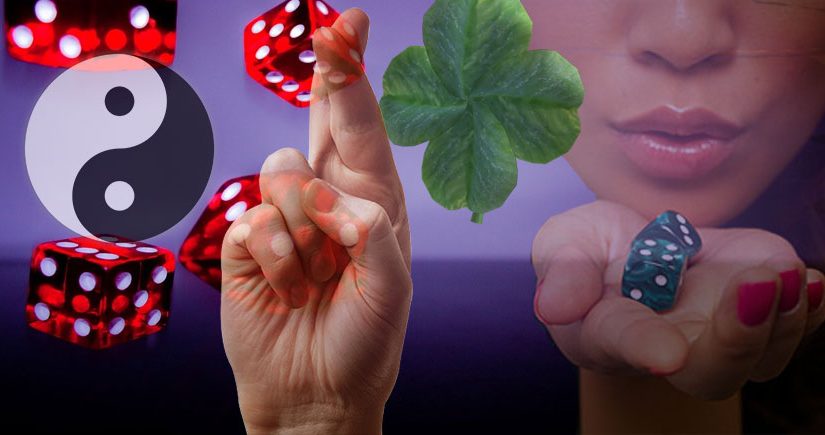
Players all over the world know that playing online casinos for real money has its ups and downs, but wouldn’t it be good to have a little luck on your side every once in a while? After that, we’ll have a look at some gambling good luck charms that, with any luck, will bring the lady to the table (or the screen) of your online slots. You may try your luck right now by playing at no deposit bonus australia casino real money.
Numerous societies throughout time have used acorns as a lucky charm. The British, for instance, have always held the belief that acorns offer some degree of physical protection against illness. Norse mythology links the lightning god Thor to the oak tree and the acorn, hence it was thought that having acorns in one’s home would provide protection from electrical storms.
In many cultures, acorns are considered auspicious, and some even believe that carrying an acorn charm can bring good fortune to the wearer.
During the holiday season, carp is served as a main course in various European nations. The practise of keeping this fish in the family bathtub until cooking it for the Christmas supper has all but died out in favour of purchasing carp from a supermarket.
After a carp has been cooked for consumption, preserving a few of the scales is said to bring good luck until the next one is cooked for Christmas.
The chrysoberyl or cat’s-eye gem is a stunning gemstone that is both inexpensive and well-known for its unusual design, making it a popular good-luck token at casinos. In order to keep the semiprecious stone close at all times, many individuals choose to set it in a ring, necklace, bracelet, or other item of jewellery.
In the West, it first gained widespread attention after being given as an engagement gift by the Duke of Connaught to his future wife.
Three Swedish Dala Horses are arranged in a row against a white backdrop.
Dala horses, made of wood, have been a staple of Swedish folk art for generations. Dala horses are a popular item in Swedish souvenir stores; they were initially created as toys but have now become a cultural icon. A considerable deal of the local population sees the Dala horse as a sign of prosperity due to the animal’s long association with the region.
The elephant follows only the lion in terms of frequency on this list. The elephant is a significant symbol in many parts of Asia where feng shui is practised, including India, Thailand, and other countries. People who choose the lion as a totem believe they will be showered with prosperity, fertility, power, strength, stability, and knowledge.
It is common practise in feng shui to place an elephant statue or figurine near the entrance to a home or company, and you may even find elephants incorporated into the design of some casinos.
The four-leaf clover is one of the most iconic emblems of good fortune in Western culture. St. Patrick’s Day, despite having the three-leaf clover as its symbol, has become a widely celebrated celebration across the world.
The odds of discovering a four-leaf clover are extremely low—somewhere between one in five thousand and ten thousand. If you’re lucky enough to find a four-leaf clover, you may take comfort in the fact that each of its leaves stands for something positive: hope, love, faith, and luck.
These amulets are widely available since they are popular Turkish souvenirs. In Arabic, the word “Nazar” refers to the “evil eye,” which may not seem lucky but really serves as a shield against such energies.
People may feel jealously or ill will toward you if they congratulate or commend you, including your opponents at the casino table. The wearer of this amulet can fend against bad ideas — or, in our case, a winning run at the tables — thanks to the belief that it can divert the “evil eye” and negative thoughts and energies away from them.
A Turkish Hamsa Hand Pendant, in gold, is centred on a bead designed to ward off the evil eye, and is set against a realistic backdrop.
In Middle Eastern and North African traditions, the Hamsa hand is considered a good omen. As with the Nazar amulet, many people think that the charm’s capacity to ward off the evil eye is enhanced by the fact that it is represented as an eye on a palm.
Each of the two types of Hamsa hands has different meanings and outcomes. One function is to stretch its fingers wide as a defence against harm. The second is a symbol of good fortune since it is holding its fingers together.
The horseshoe is a symbol of good luck in many Western cultures and is well-known to players of traditional and online slot machines. There’s a Christian mythology about St. Dunstan that’s probably to blame for this.
Legend has it that before becoming the Archbishop of Canterbury, St. Dunstan was a blacksmith. Legend has it that while Dunstan was a blacksmith, he accidentally put a horseshoe on the Devil’s foot instead of the hoof of his horse. After the horseshoe was taken off the door, the Devil was told that he would never again be welcome in a home with a horseshoe on the door.
Whether you’re carrying a lucky charm or not, your best bet is to play at a top-notch online casino that has a large selection of thrilling games, including the very best online slots.